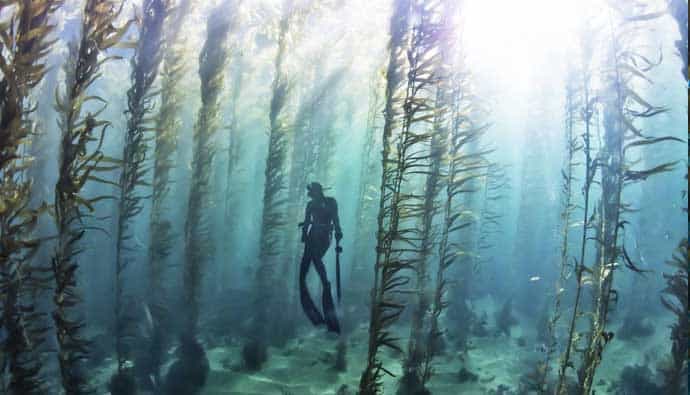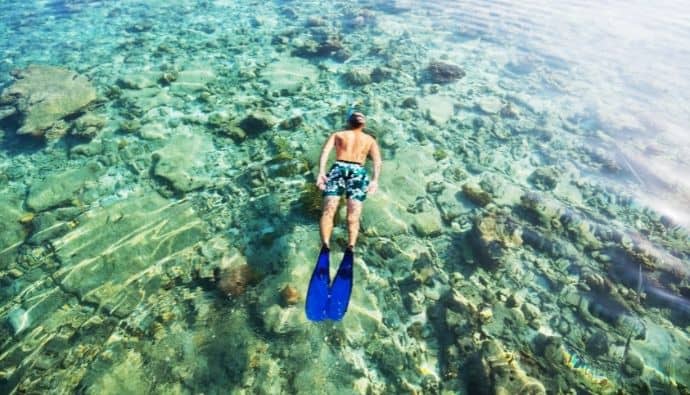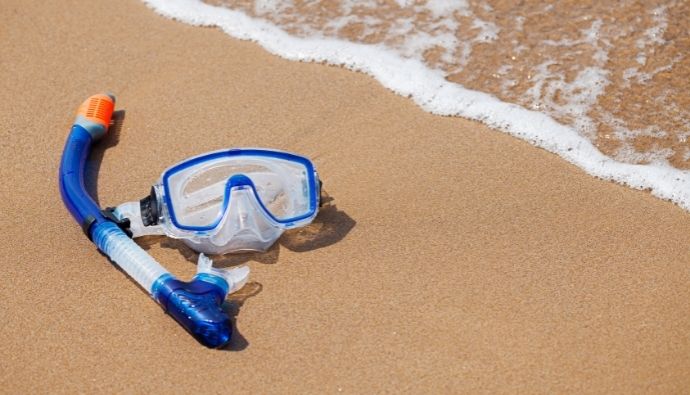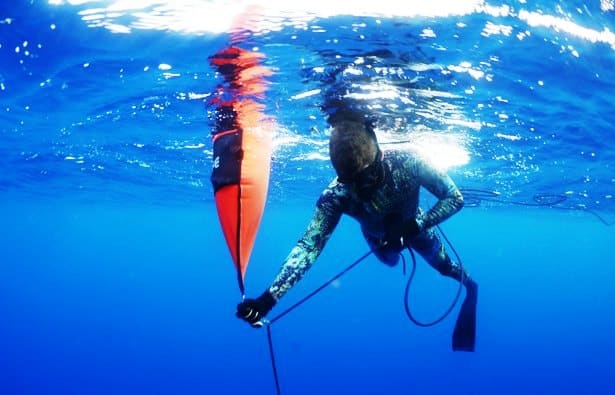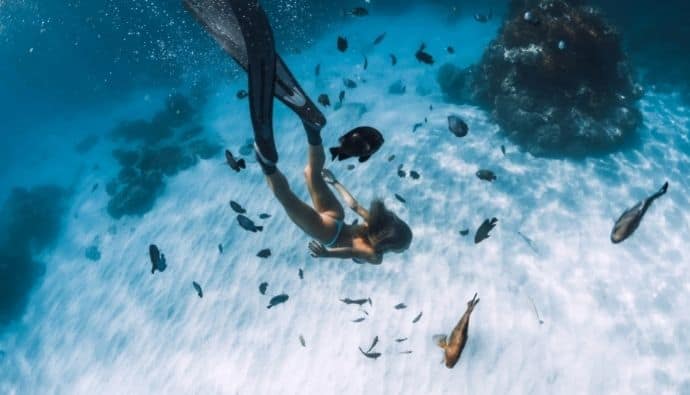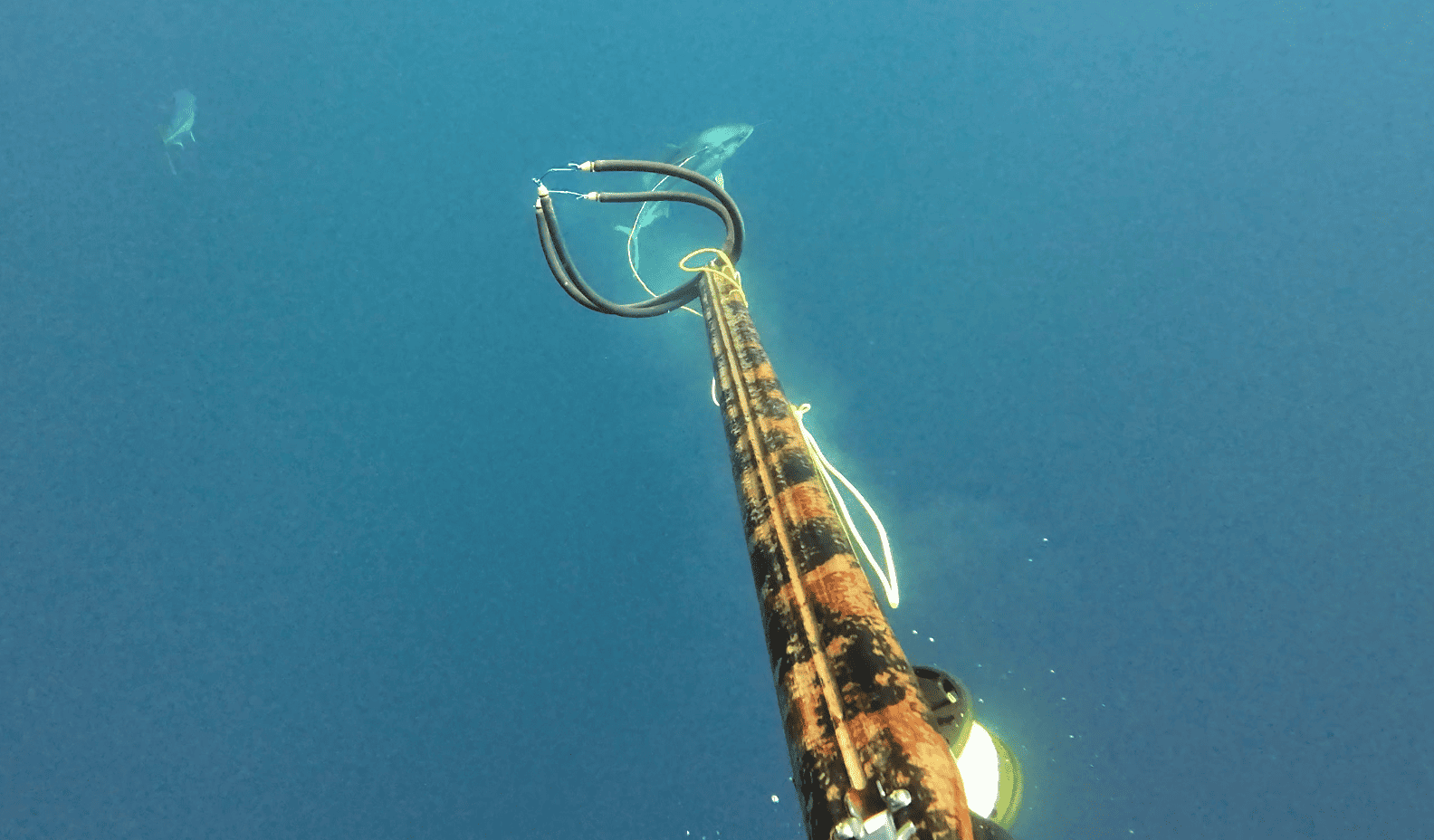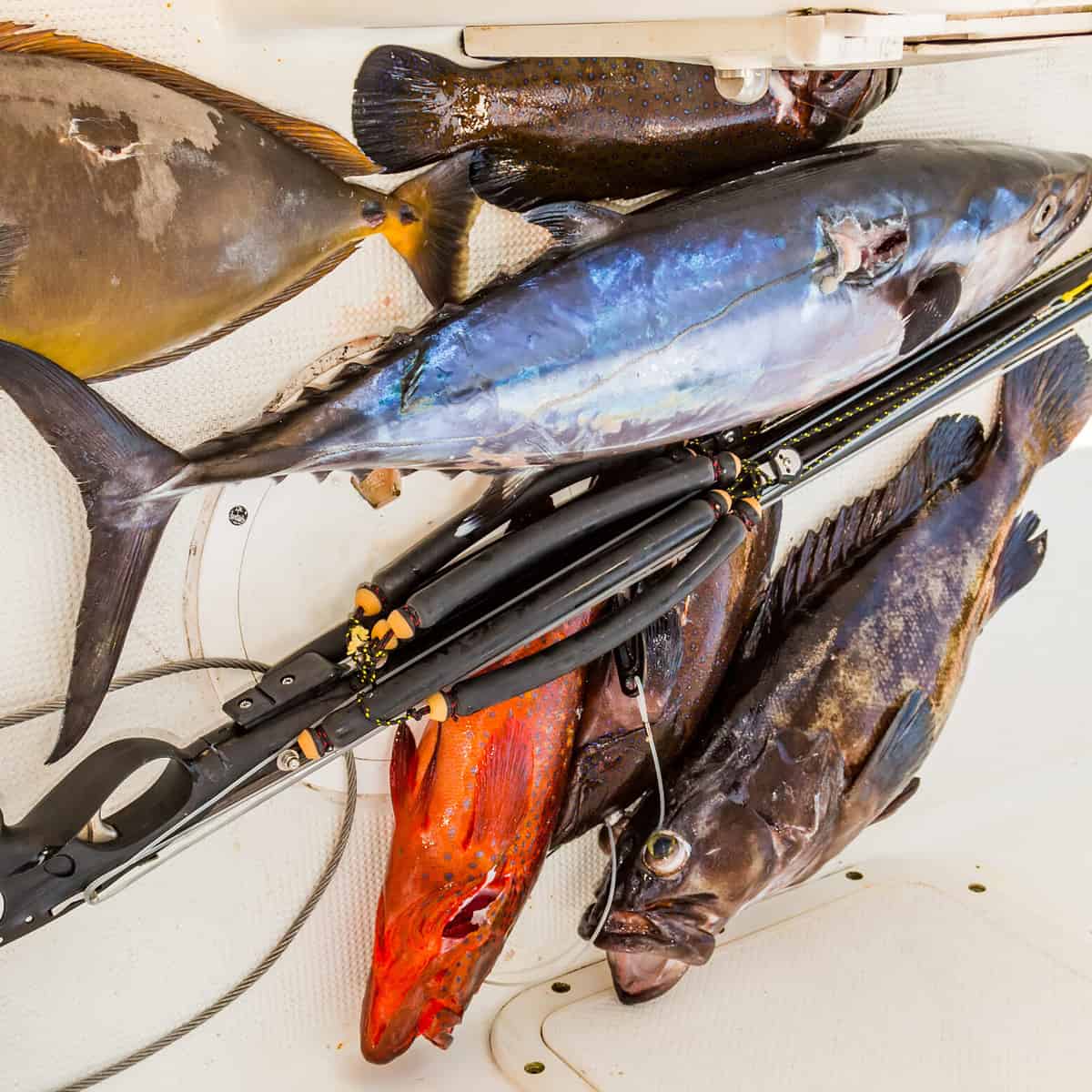Are you interested in learning how to freedive? With the right mindset and proper training, you’ll be able to reach new depths and have skills that will improve your life. In this article, I’ll share tips that freediving experts such as Ted Harty from Immersion Freediving have shared with me that helped me dive down to 70 feet and how you can do the same.
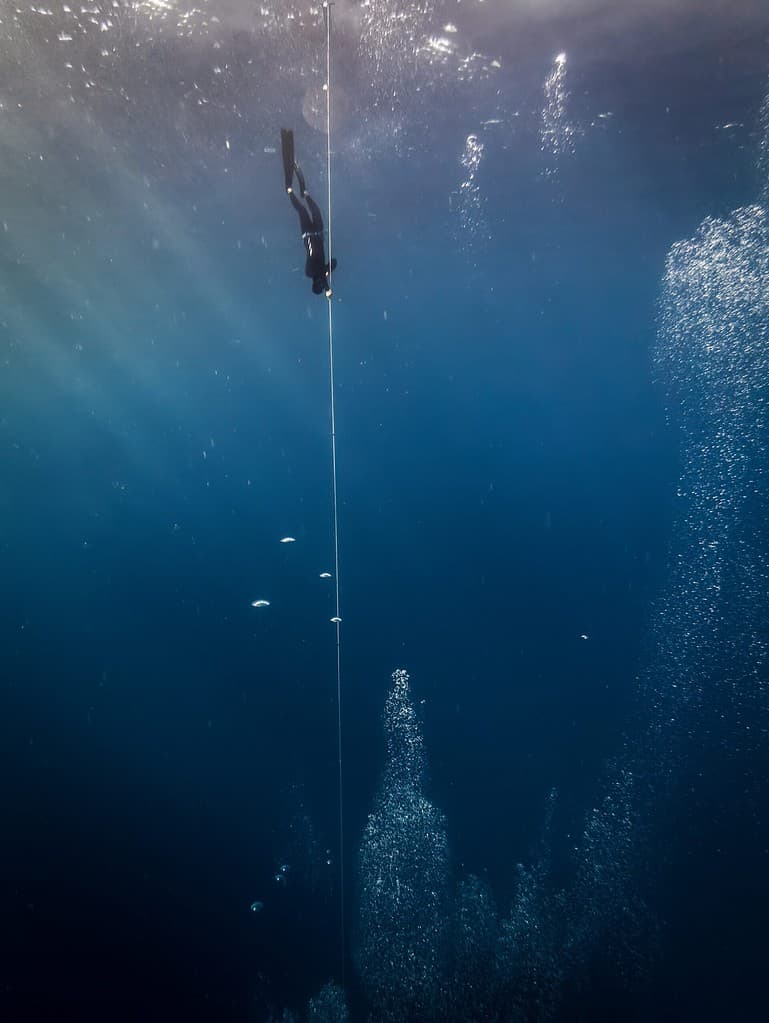
The truth is, you’ll probably never need to dive this deep.
But, if you’re like me, you might like to challenge yourself to see your capabilities.
Since I do a lot of spearfishing, I have a practical reason to be comfortable at depth. The more comfortable I am, the more likely I’ll be able to catch fish.
But since most people don’t spearfish, there’s something called freediving that is more like a form of aquatic meditation that people all over the world participate in.
The Short Answer
- Being relaxed mentally and physically is crucial
- Learn how to clear your ears using Frenzel
- Stretching is the secret to longer breath holds
- Learn how to tolerate CO2
- Avoid common mistakes and learn proper safety
Freediving Record
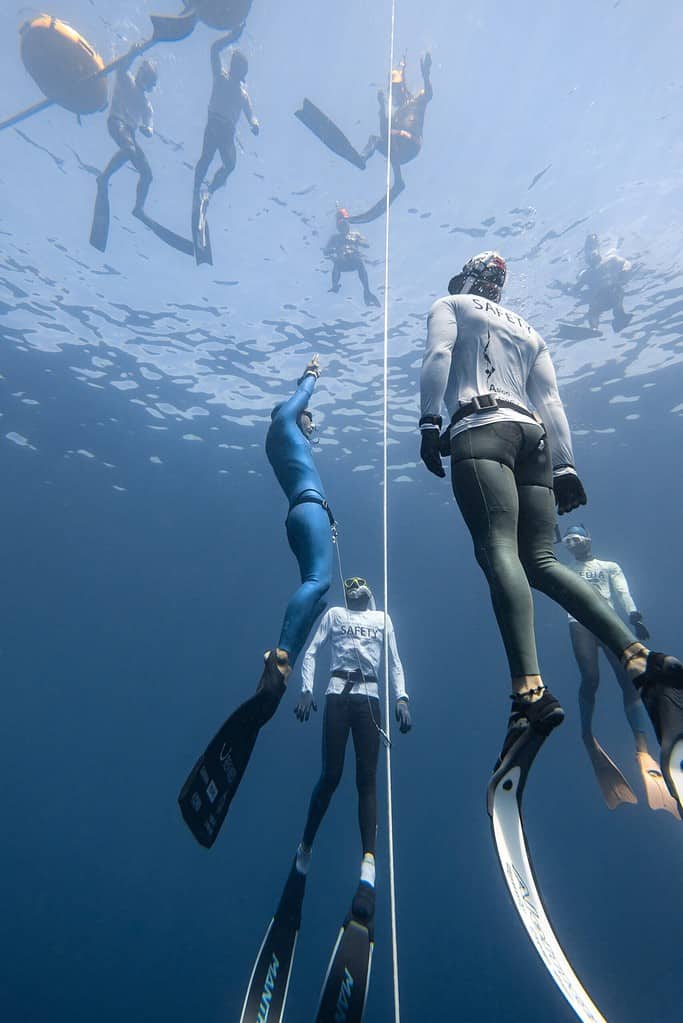
To professionals, 70 feet is a warm-up dive. Regarding freediving world records, Arnaud Jerald recently reached 400 feet on a single dive. I’ll be lucky ever to reach 100, but hats off to him!
The truth is, getting past 10 feet with no pain is a huge step for most people. Getting down to 30 and then 60 feet is a matter of practice and perfecting technique.
Here’s how I would approach it.
Tip 1: Being relaxed mentally and physically is crucial
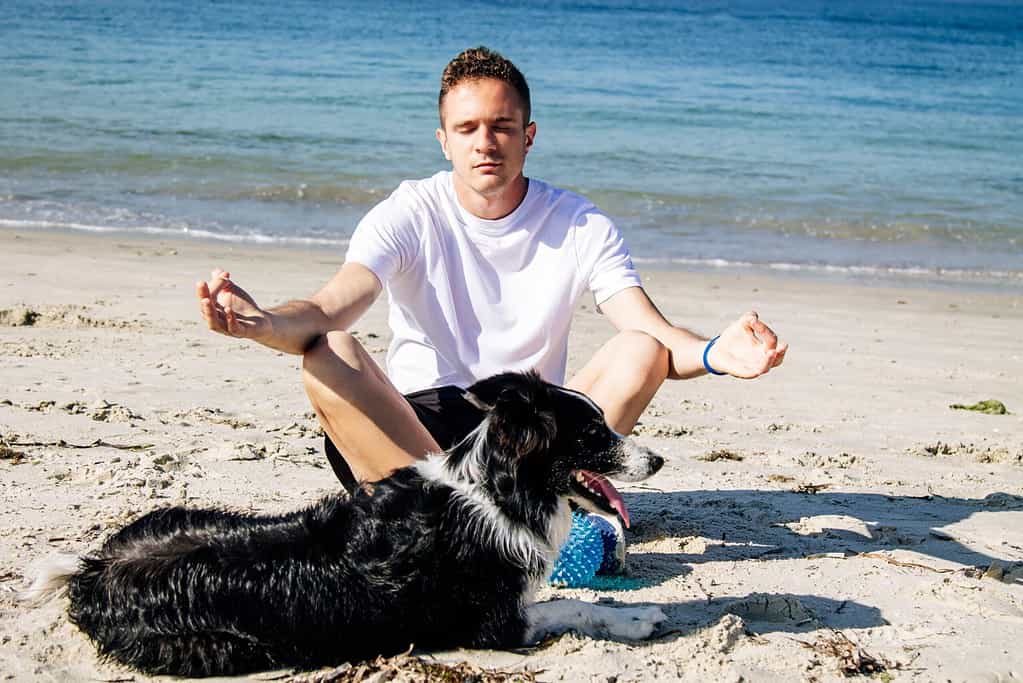
When you freedive, your mind can get very loud. This is because you’re muting your senses, and your mind starts to amplify everything. All the worries you have on land start creeping in.
I remember when I first started practicing meditation, I couldn’t last 2 minutes. Thought after thought would pop up and make me feel uncomfortable. But over time, I learned that by focusing on my breath, I could expand the empty space between my thoughts and find peace.
The same can be said about freediving. It’s a form of active meditation. If you have a calm mind, you can have a calm body that uses less energy. By being efficient in the water, you increase your ability to slowly use your oxygen supply and increase your overall diving ability.
If you want to test your mind, go into an empty room. Make sure you don’t have any electronics nearby. Sit on a pillow and time how long you can just be.
If you can make it to 10 minutes without diving for your phone, you’re ready to start freedive training. If you can’t, then you’ll need to practice some meditation. I like the Insight Timer app, but you can use Calm, Headspace, or any YouTube video you like.
Tip 2: Learn how to clear your ears using Frenzel
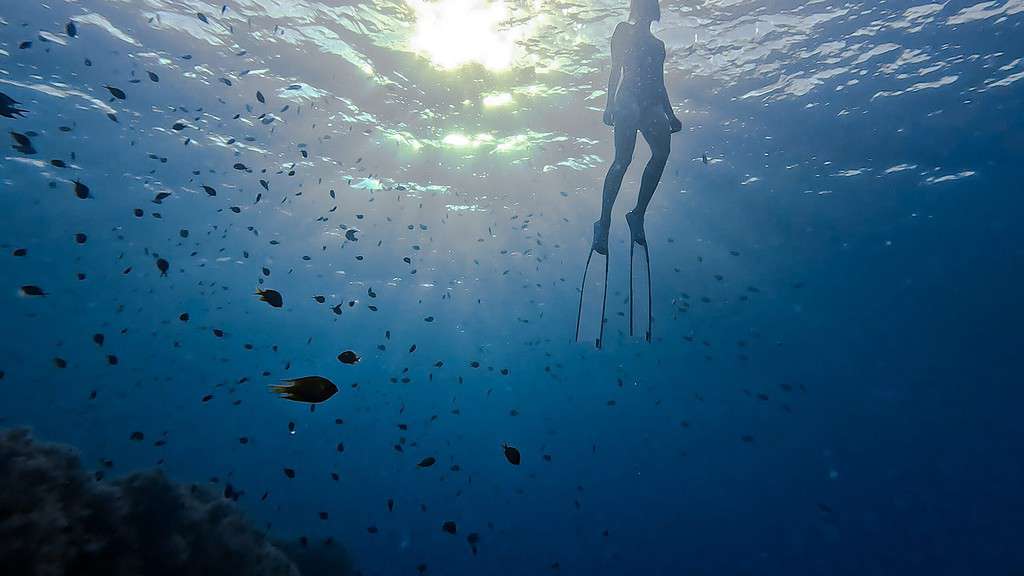
When I first started diving, it was during a PADI Scuba class. In there, they taught us the Valsalva method of clearing our ears. But first, why do we need to clear our ears anyways? If you don’t, you risk sharp pain and even blown eardrums. So as you dive down, you need to add a bit of pressure by pinching your nose and blowing gently, which opens up the eustachian tube and flows air into the middle ear. The problem with Valsalva is that it’s great if you dive feet first and have a huge oxygen tank strapped to your back. When freediving, we’re going head down and only have oxygen in our lungs.
Therefore, learning how to Frenzel will make diving easier. Frenzel takes a bit of practice to get right, so I’ll link a video I recommend you check out. However, one piece of advice I wish I learned earlier was the pre-dive equalization and equalizing way more than you think you need to.
If you feel pain, you wait too long. So on the surface, I do an equalization, then start my dive. I then equalize every few feet until I reach my depth. You might also feel your mask getting tight around your eyes. You want to blow air through your nose to reduce the pressure.
Tip 3: Stretching is the secret to longer breath holds

I don’t know about you, but my body is stiff as a brick. I tell myself it’s all this muscle I carry, but it’s due to my lack of stretching and mobility work. If you’re stiff, you reduce your ability to have better breath control, take bigger breaths, equalize easier, and ward off injury from the pressure of the ocean.
It’s also worth noting sitting is considered the new smoking. I sit at a desk way too much, and this has also led to my lack of flexibility and more tightness.
So what muscles do we need to stretch? You will want to stretch your diaphragm, rib cage, spine, shoulders, and neck.
Pick up the book Stretching for Freediving if you want specific exercises and the protocol. For me the diaphragm and neck area are the tightest, so I try to stretch them out for a few minutes a day. If you can give yourself 10 minutes a day, you’ll be limber in no time.
My favorite exercises are using the Swiss ball and doing Uddiyana Bandha breathing.
Tip 4: Learn how to tolerate CO2

It’s one thing to dive to 70 feet, but how long can you stay down there? I wish I could tell you I have some insane bottom time, but honestly, I have maybe 30 seconds down at that depth. When I’m diving shallower, say 30 feet, I could be down for a minute, maybe 1:30 if I push myself. Don’t push yourself.
A way to improve your bottom time is to get comfortable with the build-up of CO2 in the body. You might have heard of apnea tables or CO2 tables. They’re OK. But after talking with Ted Harty, who dives past 200 feet and trained guys like Tim Kennedy, he’s found a better way.
He has three protocols you’re supposed to do each once weekly. One Breath CO2 tables, 4 Max breath holds, and 4 Breath holds with max five contractions.
That might sound complicated, but it’s not. It’s just too detailed to show all of them in this video, so use this link if you want to check it out. It’s an affiliate link, so if you click it you’ll be helping support the channel so I can continue to make better videos for you.
Here’s a freediving breathwork protocol for you to try:
Take a long deep breath in through your belly, into your chest, shrug your shoulders, and now hold. Hold long enough to feel a contraction. That’s why your body involuntarily flexes trying to get a breath in. Start your timer when you feel it. After 15 seconds, breathe out slowly. Then breathe in slowly and repeat six times. Don’t do this underwater, unsupervised, or while operating that can hurt you. Use your best judgment when challenging yourself.
With proper stretching to get even bigger breaths of air before diving and the ability to tolerate CO2 at depth, you’ll be diving deeper and longer in no time.
Tip 5: Avoid these mistakes and learn proper safety
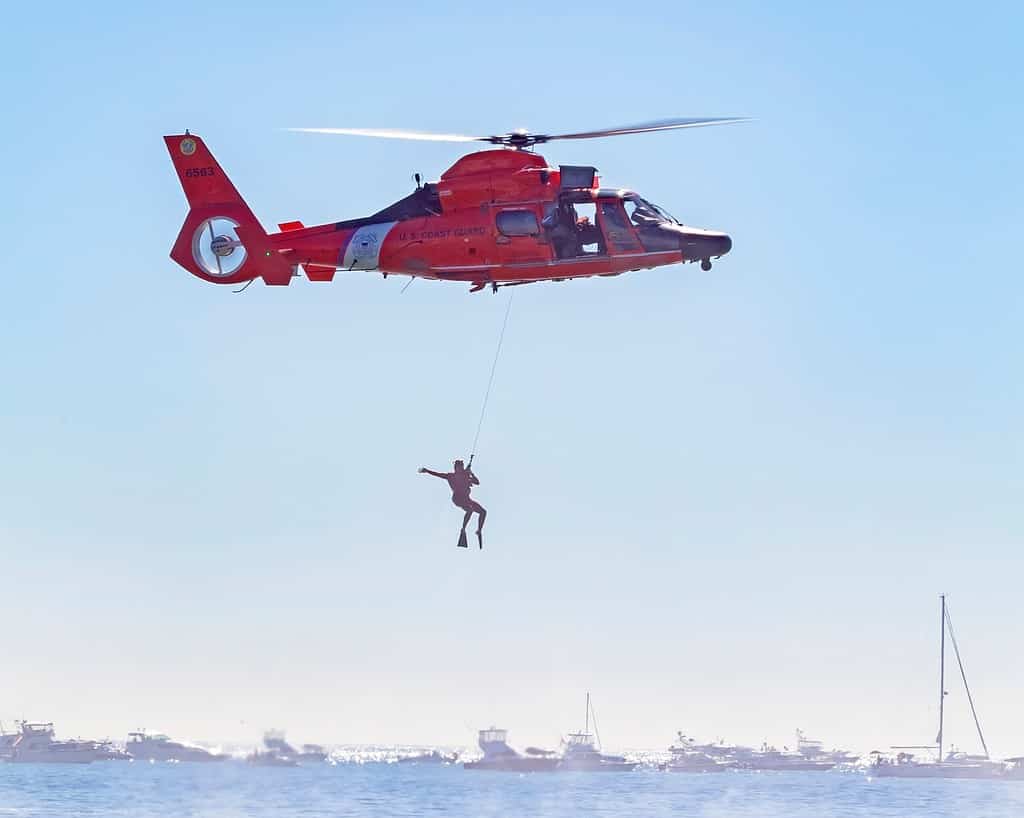
Consistency is everything if you want to dive deeper and longer. For example, stretch at least five days a week to stay limber before diving. Don’t be like me and take a bunch of time off and get that call that your buddies are going diving, and then you find yourself struggling to get past 40 because you haven’t practiced. You won’t be able to do a shortcut your way to flexibility even if you try to rush a lot of stretching in the night before.
You can stretch too much. Listen to your body and take your time with this. Think long-term, not short-term. Don’t be in a rush. There’s plenty of time to dive, and hurting yourself might take you out of the sport.
I have noticed that I tend to have worse dives if I don’t stay hydrated. Also, if I overeat dairy or eat bread or drink beer. It all messes with my congestion clogging up my sinuses and making equalizing a pain. Try to drink a gallon of water the day before a big dive and a gallon of water the day of. Not all at once, though, and make sure you’re getting the proper electrolytes in your system.
Also, never dive without a buddy. There is something called a shallow water blackout which could lead to your death if you don’t have someone rescuing you. This goes for on-land training, too. You could pass out from some of these breath drills. Always use your best judgment and avoid anything that could hurt you.
Freediving Benefits
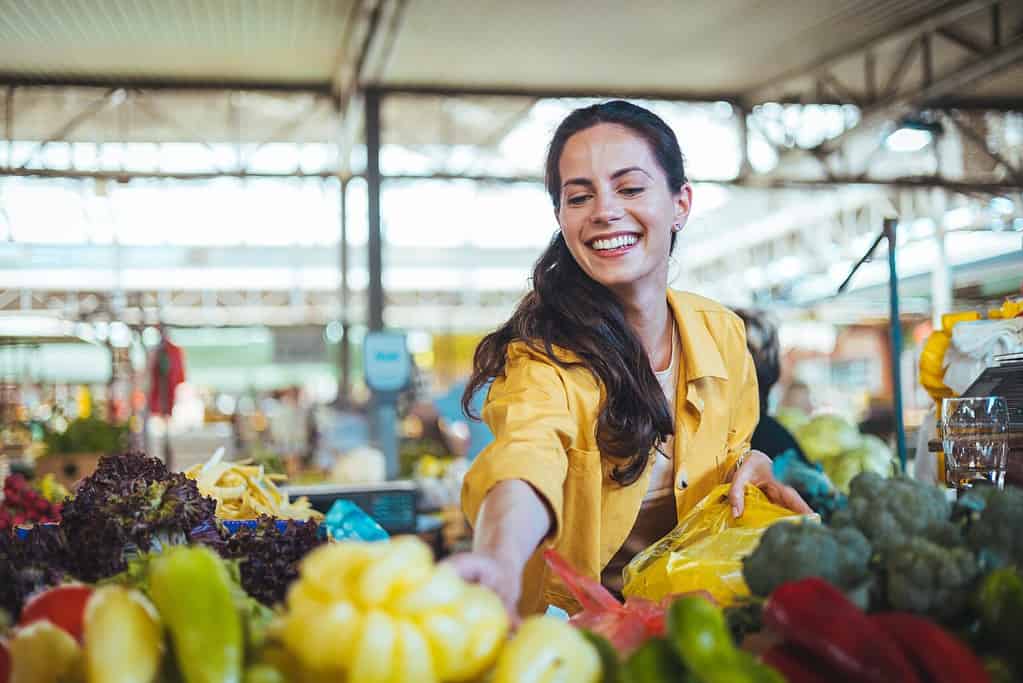
After you go through this training, you’ll start to notice how much better you feel even on dry land by breathing through your belly and feeling less stiff from all the stretching.
What also helped me was taking a freediving course. It was great to have the information and safety drilled into my brain and have experts there to critique my form.
It might be tempting to hit a specific number, like making it a goal to hit 100 feet. But I’d recommend against it. I like the idea I heard from an old spearfisherman who said, for every year you dive, add 10 feet. That’s how deep you should be comfortable reaching.
So, for example, I’m six years into diving, so reaching 60-70 feet is good enough for me. Although, I’ll play more in the 30-40 foot zone since all the fish are above there in my area.
Final Thoughts

If you were to ask me years ago if you’d find me 70 feet underwater diving and hunting fish, I would have thought you were crazy.
But having gone through a freediving course, investing in online courses from expert divers, and going on adventures to challenge myself, I can say it’s been awesome.
I get to see the ocean in a way not many people do. It’s also made me appreciate the animals down there and why we need to care for a place that gives us so much in our way of life. Kind of like hitting that subscribe button here on YouTube.
So even though you might never get down to 70 feet, at least try meditation and stretching. It’ll make you feel good and know the ocean awaits you when ready.
And if you want to watch some more underwater footage, check out this video next.





 Facebook
Facebook YouTube
YouTube
